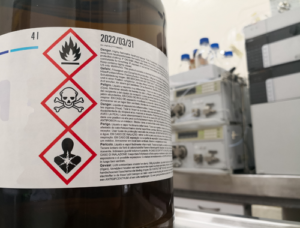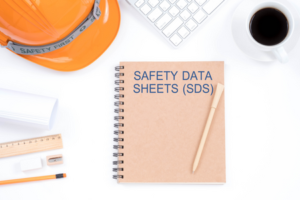Beginning on January 1, 2023, all states in Australia will be transitioning to GHS 7 from the current GHS 3. This change will affect workplaces that supply, use, manufacture or import hazardous chemicals (which covers both dangerous goods and hazardous substances). The only exception regarding timing is Western Australia which is scheduled to transition to GHS 7 on March 31, 2023.
What does this mean for you and your business? Complying with the new regulations may seem daunting, but it’s important to take the necessary steps to ensure the safety of your employees and comply with the law. In this blog, we’ll provide an overview of what you need to know and do to comply with GHS 7.
What is GHS 7 and what are the benefits of using it?
The Global Harmonized System of Classification and Labelling of Chemicals (GHS) is a single worldwide system developed by the United Nations to standardize and harmonize chemical labelling and classification. GHS is intended to improve the safety of workers, consumers, and the environment by providing a common system for classifying chemicals according to their hazards.

Some of the key benefits of using GHS include:
- Improved safety for workers, consumers, and the environment
- Standardized labelling and classification of chemicals
- Easier identification of hazardous materials
What are Safety Data Sheets and why are they important?
Safety Data Sheets (SDS) are important safety documents that provide information on the hazards of chemicals and how to safely work with them. They are designed to help reduce the risks of DGs in the workplace by providing important information on the chemical such as its hazards, safe handling procedures and first aid measures.

SDSs must be current (less than 5 years old) and follow the GHS format as prescribed by the relevant Workplace Health and Safety or Dangerous Goods regulations (depending on what State you are in). Business owners need to ensure that their SDSs are compliant with GHS 7 regulations.
What’s new in GHS 7?
There are several new changes to the classification, labelling and SDSs of DGs with GHS 7. Some of the key changes include new hazard categories and classes for:
- Aerosols (non-flammable)
- Desensitized explosives
- Pyrophoric gases
- Chemically unstable gases
- Non-flammable gases
There are also updates to precautionary statements which are on labels and SDSs. In addition to the above changes, there is a clarification of the definition of ‘hazardous chemical’ to ensure captures all Category 2 eye irritants.
How will GHS 7 affect workplaces in Australia?
Suppliers of hazardous chemicals
Chemicals that were manufactured or imported before January 1, 2023, can still be supplied without needing to go through the process of reclassification or relabelling according to GHS 7. Starting from January 1, 2023, though, suppliers should only accept stock that has already been classified and labelled in accordance with GHS 7 – this includes having an SDS that was prepared in accordance with GHS 7.
Users of hazardous chemicals

If a hazardous chemical was manufactured or imported before January 1, 2023, it is acceptable to keep using, handling, and storing the chemical in your workplace if it is labelled according to GHS 3. However, users should not accept any chemicals manufactured or imported on or after January 1st of 2023 unless they are classified and labelled according to GHS 7 standards and come with an SDS prepared in accordance with GHS 7 rules.
Manufacturers of hazardous chemicals
If your business repackages or relabels a hazardous chemical with its own product name, then under the WHS Regulations, your company is considered a manufacturer and must follow the same duties as other manufacturers. You can use GHS 3 or GHS 7 to classify chemicals and prepare labels/SDS from January 1st, 2021, until December 31st, 2022. However, any chemicals manufactured or imported starting January 1st, 2023, MUST be classified, and labelled in accordance with GHS 7.
Summary
Using GHS can be confusing for business owners, but it is important to ensure that all hazardous chemicals in the workplace are labelled and classified according to the most recent regulations. There are several changes with GHS 7, so it is important to stay up to date on what these changes mean for your business. If you have any questions or need assistance in transitioning to GHS 7, reach out to us at dg_ai or our friends at DG Network and we will be happy to assist you.
You can find further details on the Safe Work Australia website regarding the GHS 7 transition.

